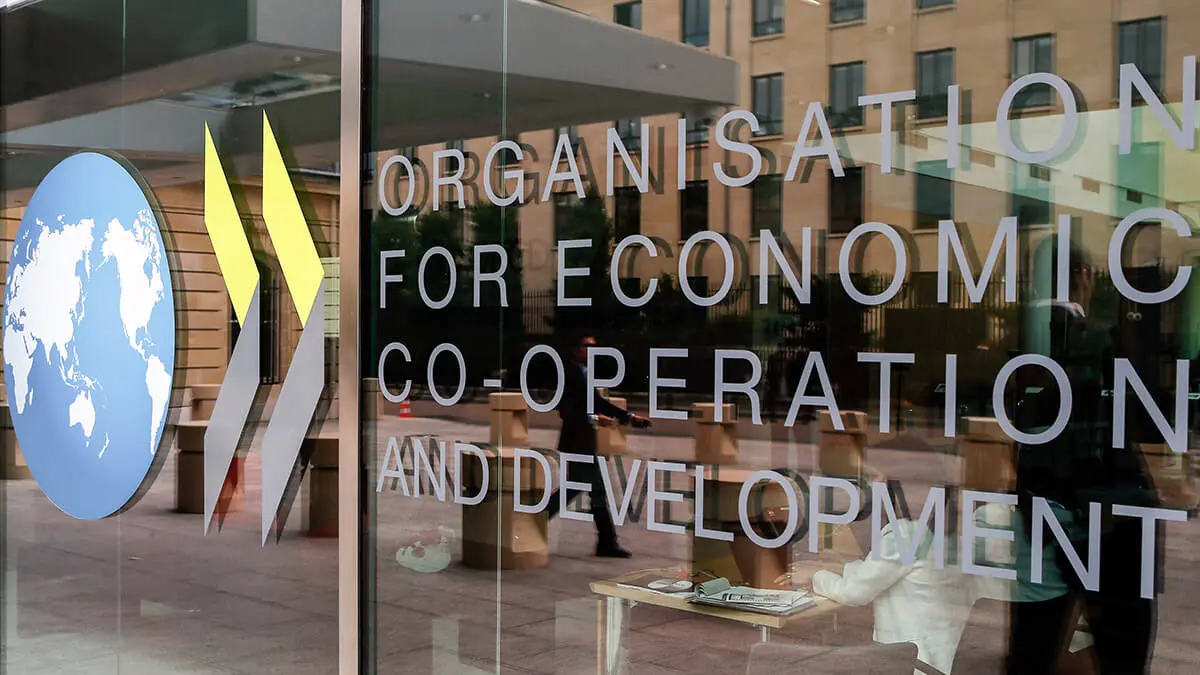An economy conditioned by geopolitics

The Organisation for Economic Cooperation and Development (OECD) is clear about this, in the presentation of its most recent report "OECD Economic Outlook" in which it practically updates its analytical vision on the outlook for the two years to come.
The text notes that the world economy continues to face the challenges of inflation and low growth prospects. GDP growth has been stronger than expected so far in 2023, but is now moderating due to tighter financial conditions, weak trade growth and weaker business and consumer confidence.
Risks to the near-term outlook remain tilted to the downside and include rising geopolitical tensions, for example, due to the evolving conflict following the Hamas terrorist attacks against Israel; and a larger than expected impact of monetary policy tightening. On the positive side, growth could also be stronger if households spend more of the excess.
The report, which was presented in Paris by Mathias Cormann and Clare Lombardelli, the agency's chief economist, estimates global GDP at 2.9% by 2023 and 2.7% next year, and if inflation is brought under control by 2025, GDP could return to above 3%.
For inflation, the outlook is encouraging as a result of the efforts of central banks in almost all countries to raise interest rates and tighten monetary policy in order to cool consumption.
"In the absence of further major shocks to food and energy prices, projected headline inflation is expected to return to levels consistent with central bank targets in most major economies by the end of 2025. Annual headline inflation as estimated by the OECD will gradually decline to 5.2% and 3.8% in 2024 and 2025, respectively, from 7% in 2023," Cormann ventured.
Meanwhile in Madrid, an OECD delegation, led by Luiz de Mello, director of the Policy Studies Branch of the OECD's Economics Department, met at the Casa de America to present the report in Spanish to ambassadors, Spanish Foreign Ministry executives, Spanish Economy Ministry executives and other officials.
In the midst of growing adversity, first, due to the trade war between the United States and China that preceded the outbreak of the pandemic in 2019; then, derived from the Russian invasion of Ukraine, the countries whose economies are showing greater resilience and strength to continue growing are the emerging economies.
For example, in 2023, the Eurozone has an estimated GDP of 0.6% and by 2024 of 0.9% and in 2025, 1.5%; recently, Germany, which is the economic locomotive of the Eurozone, reported a 0.1% drop in the third quarter and is expected to have a GDP of 0.6% in 2024, France would achieve next year a growth of 0.8% and Italy and the UK, each, with GDP of 0.7%.
In fact, in this report, the OECD has revised downwards the economic growth of the euro zone and the European Union (EU) and has even altered the forecast for Spain, which had been behaving with a certain stability. Thus its expected GDP for 2023 would be 2.4% and 1.4% for 2024.
Nor does the United States have a better outlook: this year it will close with a GDP of 2.4%, but it will fall to 1.5% next year and will remain low in 2025, with a GDP of 1.7%. Canada is another country on the same path: an expected GDP in 2024 of 0.8% and 1.9% in 2025.
On the subject
In contrast, Mexico, according to the OECD, would achieve economic growth of 3.4% this year and 2.5% in 2024 and 2% the following year. In other words, in 2024, the Aztec country would be the sixth economy in the world (out of a total of seven) that could experience a GDP of more than 2%, as shown below: India with 6.1%; Indonesia, 5.2%; China 4.7%; Saudi Arabia 3%; Turkey 2.9%; Mexico 2.5% and Korea, 2.3%
"The emerging countries have good news because energy prices are coming down, their growth may be moderate, but it is holding up and inflation is starting to come under control," added Aída Caldera, an expert in the OECD's Economics Department.
Caldera pointed out that, in general, for the world, the scenario observed by the OECD is one of moderate growth and in others lower growth and inflation that will continue to be high in a dominant manner in most countries.
Most worryingly, global GDP is expected to remain low for at least the next two years at over 3%, implying that we will remain below the wealth generation of the decade prior to the outbreak of the pandemic. This great global health emergency we have experienced has robbed us of more than just health: it has destroyed many jobs and businesses... and now geopolitical tensions will be the final straw.



